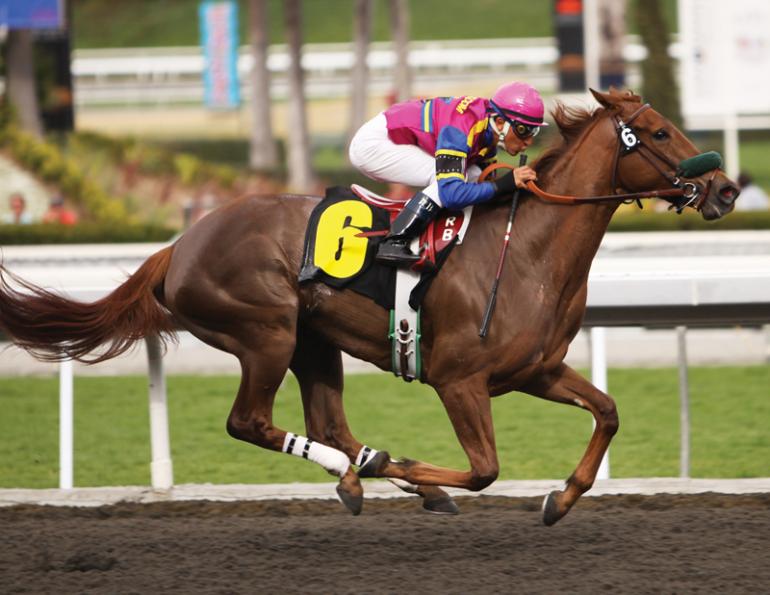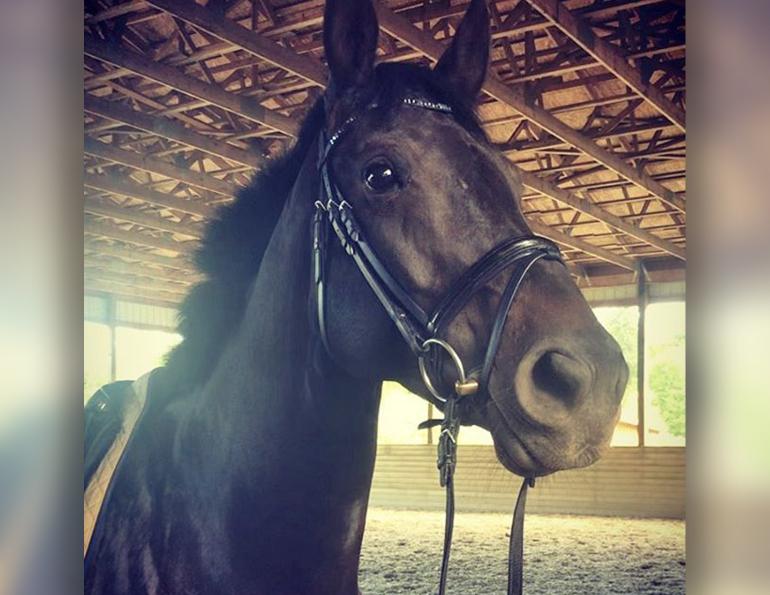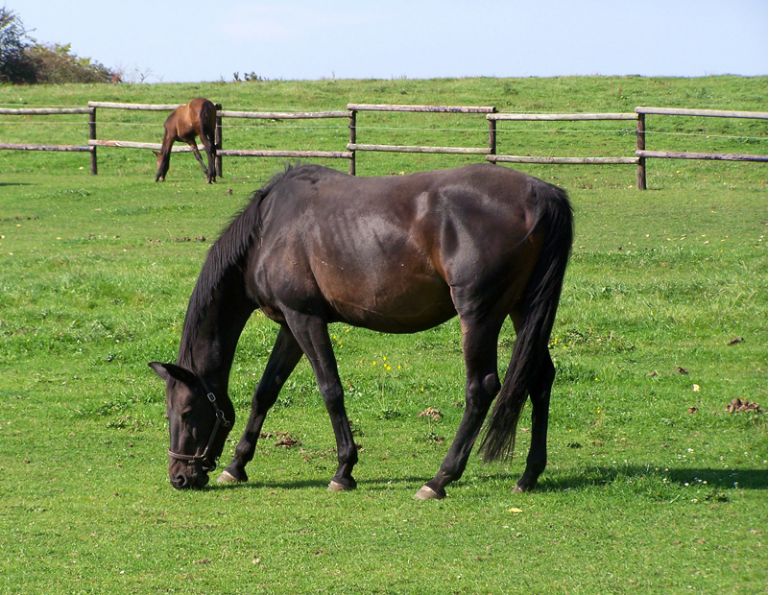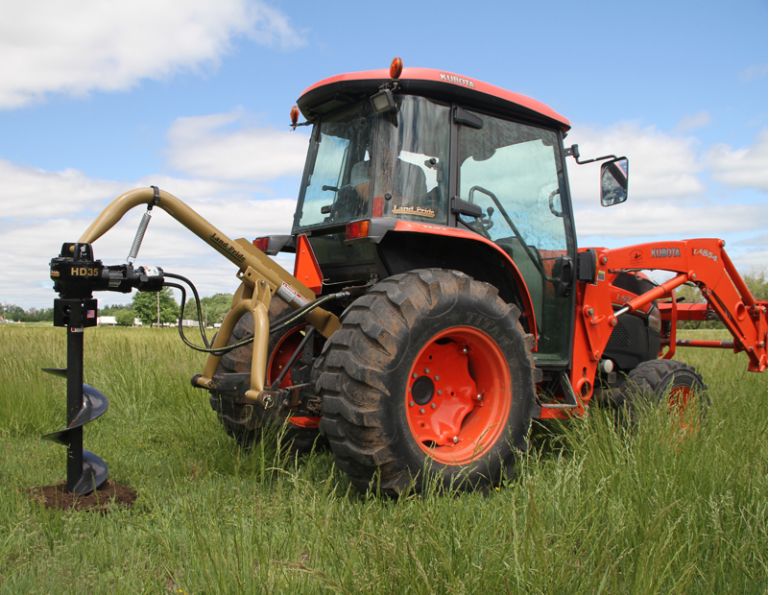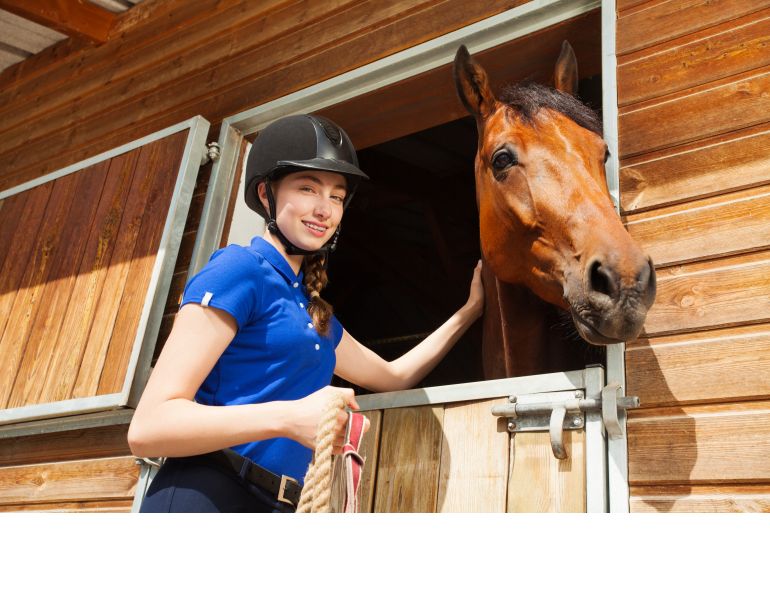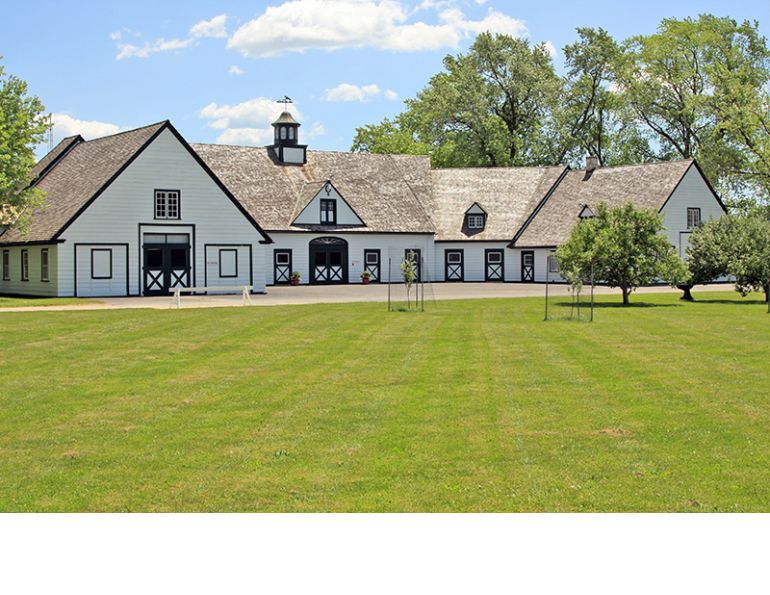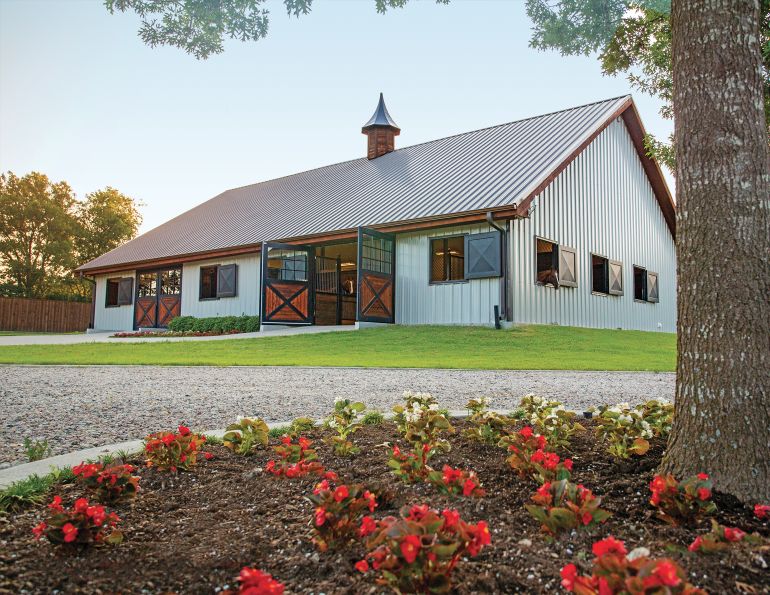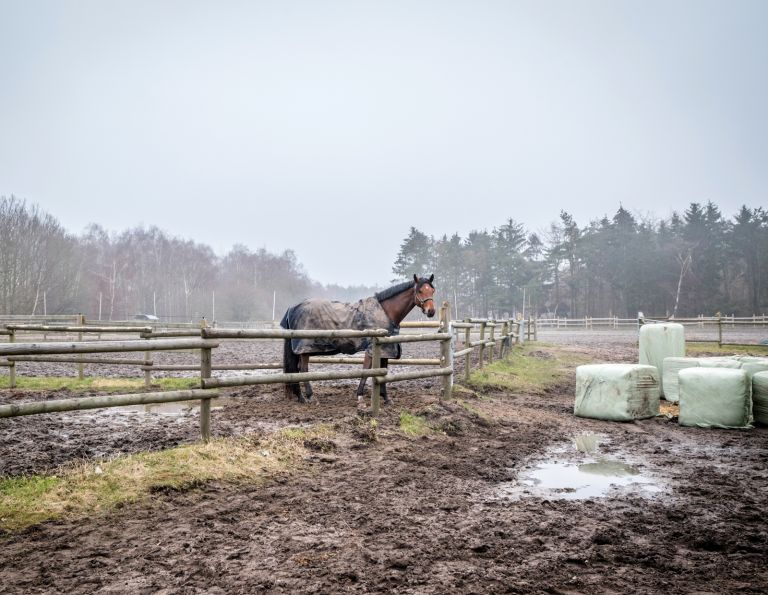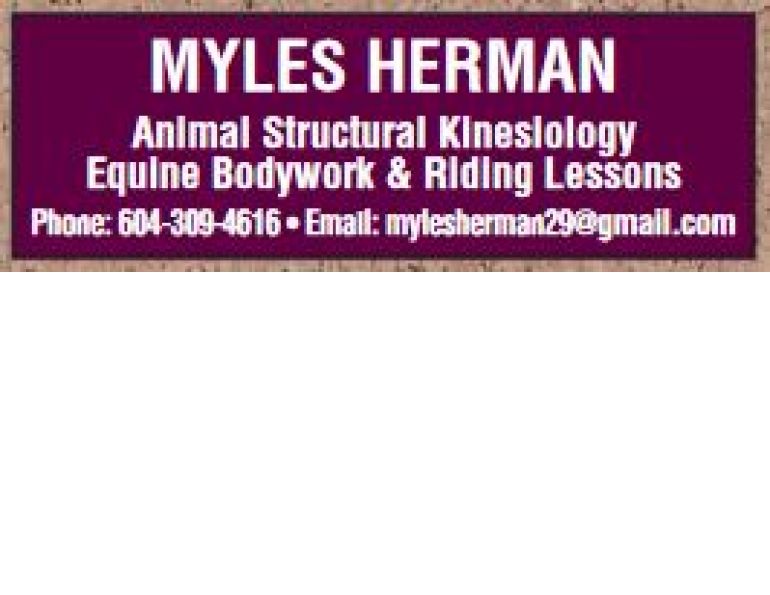By Margaret Evans
Fundamental to owning horses is the fencing used to contain them. In times past, the options were simply wooden boards or barbed wire, both of which are still used in many areas across Canada.
Today there are many safe and durable options for containing horses, and horse owners can select their preferences in structure, design, materials, colour, and visibility. Fencing is all about function, and function is dictated by the intended purpose, depending on whether you are running a boarding barn, breeding barn, training facility, or a family acreage with a few ponies for the children.

Boards placed on the outside of the posts make for a weaker fence. The horse will push the boards out as he rubs on the fence or reaches through it. Photo: Shutterstock/Chloe 7992
Planning Your Fencing
To start planning your fence, take a walk around your property, giving specific consideration to how and where your horses will be contained, their access to shade and water, the efficiency and safety of the area, and your need to access them on a day-to-day basis.
Make a checklist of items that can help both you and your installer decide on the best plan of action. A fencing expert will be able to offer suggestions for the most effective materials and cost savings, including things you may not have thought of. Here are a few:
- Consider the location of paddocks and pastures in relation to the barn, and the ease of moving horses between housing and pasture or paddock.
- Will the horses be out all day and in a barn at night? Or will they be out all the time, in run-out stalls, or only turned out occasionally?
- Decide the size your paddocks and pastures should be, and how many horses will be in a single turnout area? Too many horses in a small paddock can lead to stress or injury, and often social pressures force a horse to challenge a fence.
- Will separate paddocks and types of fencing will be needed for mares and foals, stallions, performance animals, and additional stock? Do you have any escape artists in your herd, or others that are a challenge to contain?
- Plan your fence to take advantage of the natural shade of healthy trees and remove any trees that are unsafe or may blow down over the fence.
- If possible, place the fenceline along areas of higher ground, and for more secure posts avoid wet or previously excavated areas.
- If your property is adjacent to a main road, do you require a perimeter fence for extra security against unwanted visitors, and do you need the perimeter fence to deter predators?
- Do you need pathways between paddocks?
- Think about your management objectives. For example, do you need dedicated individual turn-out areas for the types of services your stable offers?
- Do you want a portion of your fencing to be movable to access rotational grazing?
- Consider the size, number, and location of gates, taking into account the safe movement of animals and access for farm equipment. Gates and their placement are just as important as the type of fencing used.
The answers to these questions will help you calculate a budget. Fencing for horses is an essential part of any horse farm or acreage but skimping to save a few bucks could lead to horses getting injured or loose, repairs, and added maintenance.
Related: Working Your Horse Property Plan
Horses test fence strength regularly, so fencing needs to be sturdy and clearly visible. They are flight animals and fear of something can send them running first and thinking later. That instinctive behaviour dictates the kind of fencing material to use and where it should be placed, keeping safety uppermost in mind. For example, if a fenceline is placed in a shaded area, an obscured area where it is concealed by bush, or at the bottom of a slope, a running horse may not see it until the last moment and may crash into it.

This fence lacks visibility, and dead trees that may blow down over the fence should be removed.
For fencing, think big, bold, and high. Be sure that the fencing does not allow a horse to put its head through the gaps to snack on grass on the other side and become stuck. Horses always seem to think the grass just out of reach is better than what is in front of them!
In looking at fence design, consider the clearance from the bottom board or wire to the ground. A higher clearance means a foal or miniature horse could slip underneath, or children and dogs could crawl into the pasture.
Laura Kenney, extension educator for equine at Pennsylvania State University, recommends that fences should be installed at a height equal to the height of your horse’s eyes with his head up, about five feet or better. Draft horses might need something higher, and stallions should have fencing at least six feet high. Plan your fencing around your tallest horse.
Related: The Basics of Horse Pasture Management
In the planning stage, remember that horses are herd animals, with a pecking order which can sometimes have harsh repercussions. A subordinate horse might panic if trapped by a dominant animal in a tight corner of the pasture. Where possible, choose rounded corners rather than hard 90-degree angles. A rounded corner or a curved fenceline makes for an easier escape route for a trapped horse. If horses are being separated into different paddocks or turnouts that share a fenceline, the safest option is a double fence separation between them to prevent horses interacting with each other over the fence. Another option is to place a strand of electric wire across the top of all shared fencelines.
All pastures have gates, and ideally more than one. Decide the size of each gate and have one that is wide enough to comfortably drive a vehicle or your farm equipment through. Gates should have a straight approach and be placed where horses won’t gather and get stuck when you are opening it.

Barbed wire can cause catastrophic injuries and should not be used for horses. Photo: Dreamstime/Volga 1971
If you plan on various paddocks or turnout areas with double fence separation, you may prefer to have two swing gates opposite each other. By opening the two, you can create a quick, directed pathway from one paddock to another when moving horses around.
Fence off power line guy-wires, wet or marshy areas, streams, ponds, trees unless they provide valuable shade, or any area that is either environmentally sensitive, structurally at risk, or where a horse can do itself harm.
Perimeter Fencing
The perimeter fence is a strong, visible fence around the boundary of the area designated for horses. It will provide additional safety and security for your horses and your property.
“Many customers choose a 2x4-inch knotted mesh for the perimeter fence,” says John Ferris, co-owner of Ferris Fencing with his wife, Lesley, in Qualicum Beach, BC. “Then you have considerably better safety for the horse, keep small pets in, and keep neighbourhood dogs and predators out. [You can] manage your pasture areas with portable electric fencing so that, by moving the portable fences, areas can be rested, machines have access to remedy problems or cut hay, or you can designate your areas for drier land in the winter and allow access to the wetter land in the summer.”
Related: Muddy Horse Paddock Footing Fixes
Knotted 2x4-inch mesh fencing is often used for large areas on farms and ranches, and is both efficient and reasonably economical. Cost will depend on the class of galvanized wire with class #1 being the standard grade while class #3, according to Lesley Ferris, is best and will outlast the standard grade by six times.
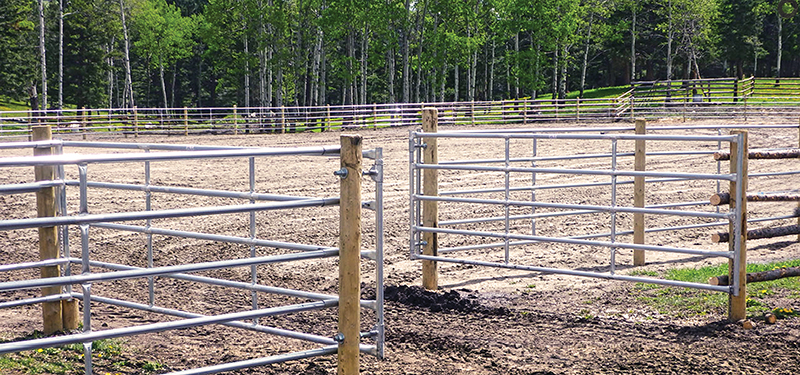
Plan gate locations with a straight approach, with ease of movement of animals and equipment in mind. This galvanized continuous farm and ranch fence from CF Fence is strong and durable, does not require maintenance, and is a popular option for large pastures. Photo: CF Fence
“My advice when recommending fencing to the customer is to first determine the primary use of the fencing,” says Lindsay Sears with 2W Livestock Equipment in Nanton, Alberta. “Is it for horses, cattle, both, or is it just perimeter fencing?” The next step is to determine the terrain that will be fenced. “Terrain is a determining factor when considering what type of fence you can have,” she says. “Then, we determine their budget and lastly provide a layout of the fencing to give them an idea of what it will look like.”
Fence Posts
Many years ago, I looked after a Welsh Mountain pony named Billy, whose owner ran a store. Every Sunday, Billy spent time at his owner’s home and was turned out in a tiny pasture adjacent to a little field. The fence boards were firmly nailed to the posts and the gate was shut, but he always mysteriously managed to get into the field. We eventually realized that he had learned to lower himself and literally shimmy under the bottom board at one particular section of the fence. The fence post was loose in its hole and as he pushed forward the post rose up, the board slid over his back, and he could move into the field. After he was through, the post dropped back into its hole and the fenceline resumed its normal profile. Once Billy’s trick was discovered, a quick concrete job fixed that problem.
Fence posts of the proper size, correctly installed, are the foundation of any fencing project. When in doubt, always go larger, and securely fix them in the ground.
“When considering your fence posts, weigh your options by asking yourself some basic questions,” suggests John Ferris. “What will the post be used for? Is it going to be a permanent fixture, or will it be stored away in the barn when the grazing/growing season is over? What type of post can be installed in the ground you are dealing with? What are your maintenance expectations? As a rule of thumb, always use posts which are at least one foot longer for corners, gates, brace posts, and end posts.”
John Ferris recommends that, when placing a post is difficult because of rock, boulders, or severe hardpans, use a pneumatic drill to chip away at the substrate, keeping the hole as close to the diameter of the post as possible so that it can lock into the ground. Do not use smaller posts as they may snap off at ground level. A metal post could compensate if a wooden one is difficult, and he recommends a 3.5-inch diameter schedule 40 tube. Light duty steel could flex. Alternatively, of course, is to reposition the fence away from difficult areas.
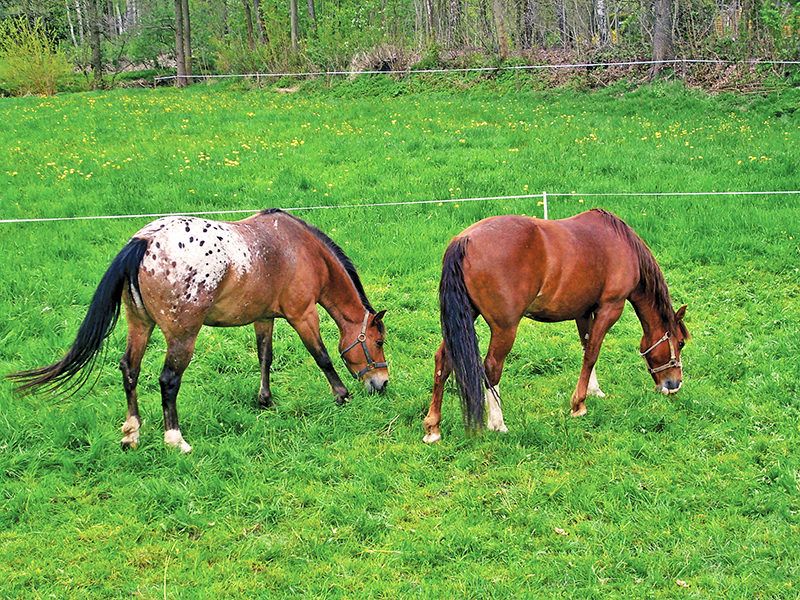
John Ferris advises horse owners to give their animals as much room as possible, with access to grazing, and to use portable electric fencing for good pasture management. The portable fence can be moved to allow areas to be rested, which prevents overgrazing, and makes for happier horses with access to fresh pasture on a regular basis.
Types of Fencing
Wooden board fencing has long been a traditional form of fencing. Wood board, usually 2x6-inch wood planks, is safe for horses and can be treated, painted, or stained to extend its life. Untreated wood will fade and weather conditions will cause it to weaken and splinter. In addition, horses tend to have a habit of chewing and rubbing on wooden fences and eventually breaking them.
Construct the fence so that it is smooth on the horse side. Rails and wire mesh should be placed on the inside of the posts for a stronger fence. If horses push against it, they will not push the fasteners outward so that they pop away from the posts.
Related: How to Make Rotational Grazing Work on Your Horse Farm
“Consider function,” says Dwayne Job with System Equine in Rockwood, Ontario. “How do you want your fence to perform? Do you want it to be very safe? Is it going to keep predators out? Does it have to keep foals in?”
Newborn foals, weanlings, and yearlings are particularly rambunctious and will run, jump, and play regardless of fence line. If the paddock is to be used for broodmares, it needs to be large enough to safely contain young horses with plenty of space to spare.
Job stresses the need to know how much work a property owner is willing to do after the fence is installed.
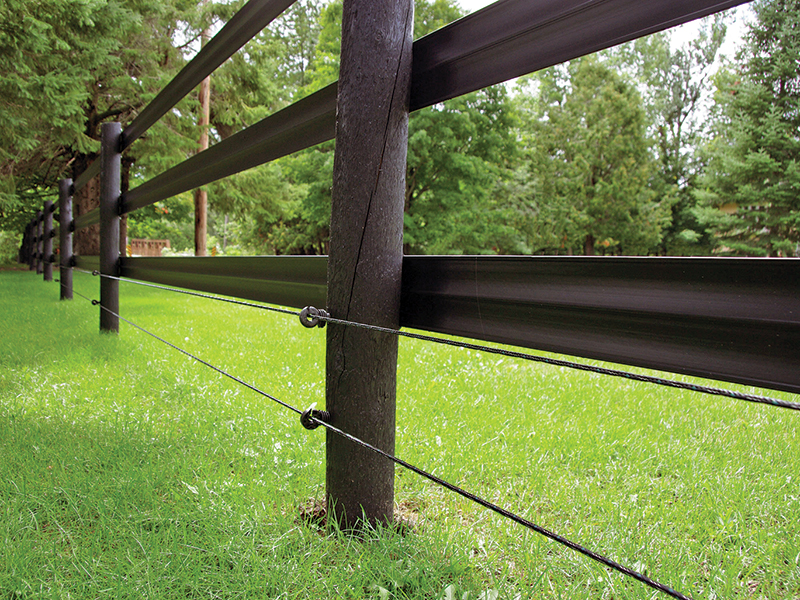
Flex fencing consists of flexible polyethylene strips tensioned between posts, and installs on the posts with a bracket which allows the fence to flex on impact if an animal hits the fence. Bottom strands of electric braid keep horses from grazing through the bottom of the fence and deter small animals from entering the field. Photo: System Equine
“The difference between a good fence and a bad fence is one vet bill,” he says.
At System Equine, flex fencing is the top seller. It is very low maintenance and very safe for animals.
Flex fencing is vinyl fencing that comes in flexible polyethylene strips tensioned between posts. The fence usually consists of a wire or multiple wires bound by vinyl of varying widths and in varying colours. Flex fencing is highly popular and widely used because it is low maintenance with the exception of occasional retightening, looks pleasing to the eye, is stronger and more durable than wood, and does not need painting.
“It installs on the posts with a bracket,” says Job. “The bracket allows the fence to flex on impact so that if an animal hits the fencing it will give and come back. Flex has a 30-year warranty on the rail, and it can be re-tightened if it looks slack.”
In addition, he recommends to all his clients that they also install electric wiring on the fencing in order to contain horses.
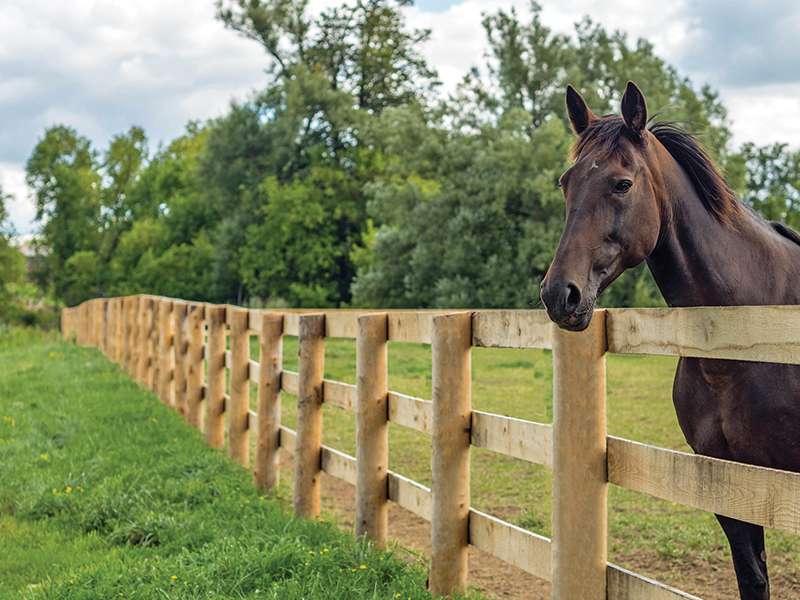
Traditional hardwood fencing is a beautiful option. Photo: System Equine
“It protects the investment, keeps the horses off the fencing, and keeps horses from getting hurt. Electric is very safe to use and operate. It is set up to ‘pulse’ instead of a constant zapping. Horses get a zap and move away from the fencing.”
For some time, white vinyl fencing has been really popular, and it always looks attractive. But other products are also moving up the popularity scale.
“Coloured fence, i.e., black, brown, or tan in the vinyls and electric fence polywires and tapes are giving the traditional white fence a run for its money,” says John Ferris. “Vinyl post and rail, polyethylene covered wire, and monofilaments have now been available for quite a few years. [Now there is] the availability of good tensioners, proper electric fence insulators designed for wire or tape, and innovations for the gate crossing with electric bungee cord, which allows the gates to be opened and closed eliminating dropping the handle and hotwire onto the ground creating shocks.”
Related: Planning Your Horse's Run-In Shed
John Ferris says that single covered brace wires eliminate that dangerous loop and exposure of bare wire to the animal. In addition, today’s technology with electric fence testers, analyzers, signal lights, and alerts assist the horse owner with monitoring the system and receive an alert when there is a problem. Electric fence controllers have the ability to operate on 110-volt plug-in, 12-volt battery and can come with solar compatibility.
“Electric fence is very much in demand,” says John Ferris. “Not only do customers want to protect their livestock but they also want to protect their existing fences from being wrecked by livestock. Electric fence is a clean and environmentally desirable fence. There is no leach-out from paint, and animals will not chew it so there are no chips, shards, or other hazards created. It is used to protect watercourses in pastures and is easily installed on plastic posts which do not rot, corrode, or pollute.”
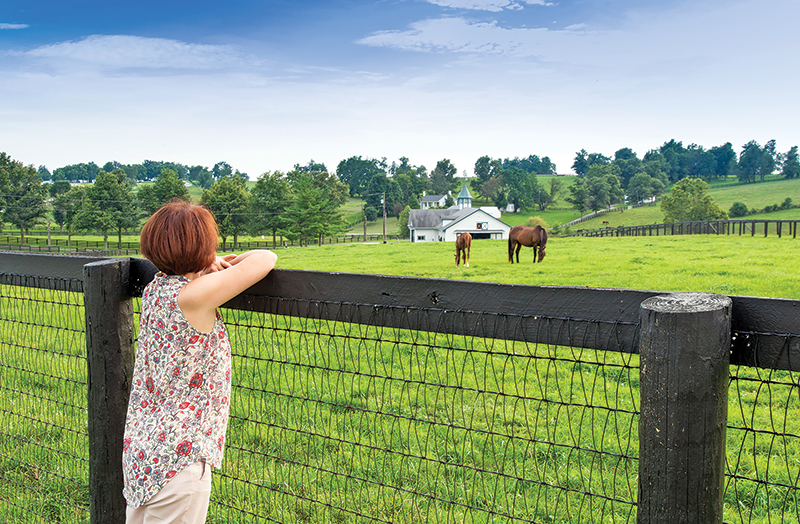
Strong, solid fence posts with diamond mesh to keep predators out and prevent horses and other animals from stepping through or walking up the fence. Photo: iStock/Volgariver
John Ferris stresses the need for the horse owner to be diligent and keep the fence “hot” at all times. If the fence is working at the proper voltage it will ensure a high degree of safety for livestock as well as deter predators.
Electric fencing is increasingly popular and, in Drummondville, Quebec, HorseGuard Canada markets an electric ribbon. Rather than a conventional wire, the 4-centimetre ribbon is an effective visual deterrent for horses.
“In Europe, most (if not all) horse fencing is done with electric tape,” says Sandrine Lecacheur. “Horse owners consider it the safest and most secure of all fences.”
Lecacheur’s father, Serge Lecacheur, developed his tape fence in France in 1985 and introduced his product into Canada in 2010. The tape consists of 10 stainless steel wires each .4 millimetres in diameter on a 4-centimetre wide ribbon. It has proven to be durable in extreme weather conditions and it can be permanently or temporarily installed, and added to an existing fence.
The HorseGuard system does not need a ground rod. Its bi-polar conductivity is maintained due to the positive and negative lines incorporated into the ribbon so that it can be used reliably in a wide range of elements from icy and snowy soils to compact, rocky, or very dry soils.
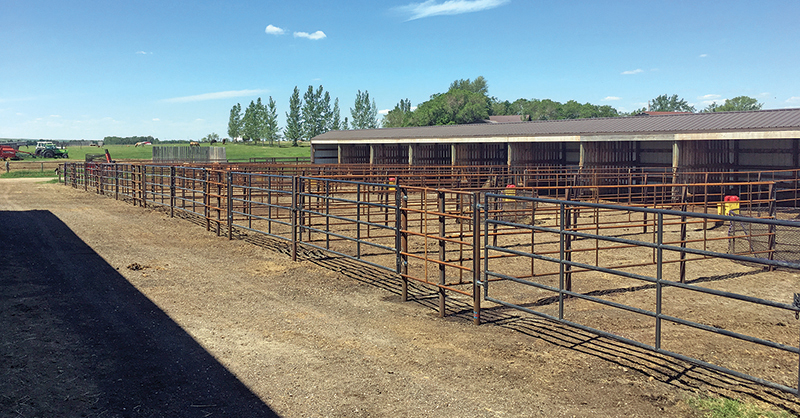
Continuous fence panels are sturdy enough for horses and cattle, and make excellent perimeter fencing for acreages, says Lindsay Sears of 2W Livestock Equipment. Photo: 2W Livestock Equipment
In British Columbia’s Okanagan wine country, CF Fence based in Oliver is contracted to do a lot of vineyards as well as farms and ranches. In addition to erecting 8-foot deer fencing, the company offers 5-foot field fences as well as 5-foot non-climb horse fencing, both with a galvanized pipe top rail to finish off. The non-climb horse fence consists of a 2x4-inch wire fence that is 4 feet or 5 feet high.
“With the non-climb fence, the horse can’t put a hoof through it,” says owner Alan Cossentine. “A person can’t climb it.”
They also offer a popular galvanized continuous fence.
Related: Planning Your Horse's Run-In Shed
“The continuous fence appeals to most customers,” says Cossentine. “It is costly, but it is a one-time investment. We tell our customers that you don’t have to build it all at once but that it can be built in stages.”
The galvanized pipe comes in 21-foot lengths with one end of the rail swedged so that it can fit into the full end of the next pipe. Rails are welded in place using ripple pipe uprights. Continuous fencing is ideal for paddocks and especially for larger pastures. Cossentine, who is also a cattle rancher, says that while it is a bigger investment initially, it is superior to wood, does not need painting, can withstand the ravages of weather and the chewing habits of livestock, and still look great year after year.
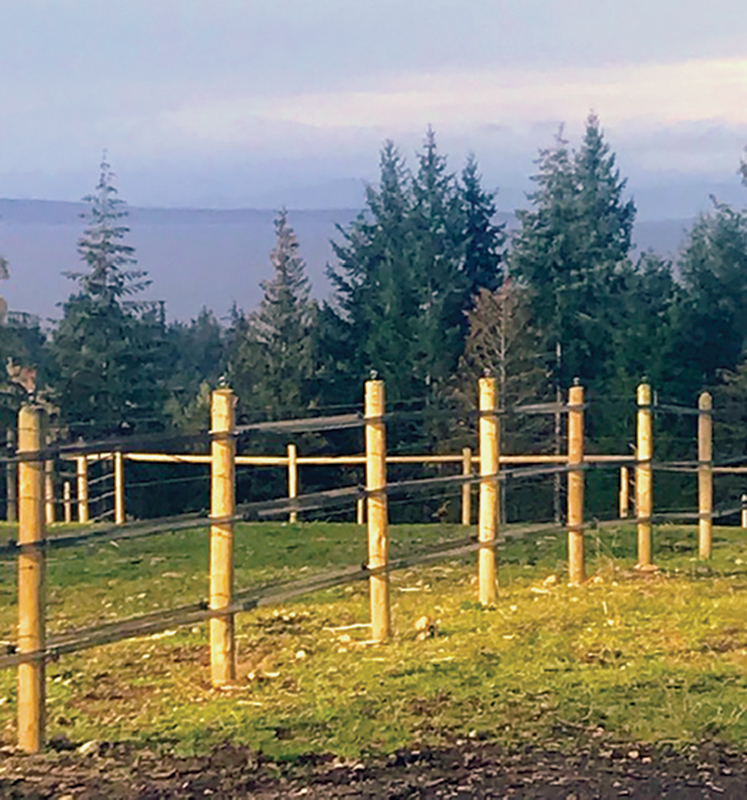
Electric fence protects livestock while also protecting the fence itself from damage by livestock. To be safe and effective, electric fencing must be working at the proper voltage at all times. Photo: Ferris Fencing
“You need fencing that is safe for the animals, user friendly, and functional,” he says. For horse owners contemplating a fencing project, his best advice is to design and build it right the first time, and don’t cut corners.
Lindsay Sears agrees.
“Our most popular style of fencing right now is the continuous fence panels,” she says. “They are a great multipurpose panel. They are sturdy enough for horses and cattle, plus they make for great acreage perimeter fencing.”
Sears points out, however, that the biggest change in recent years has been the rising cost of steel, which has increased the cost of fencing products. To keep costs down, detailed planning for the fencing project is essential.
Sears says that the biggest stress on fencing to consider is how much pressure will be placed on it. That will be set by the type of livestock you keep, or the animals your neighbour keeps.
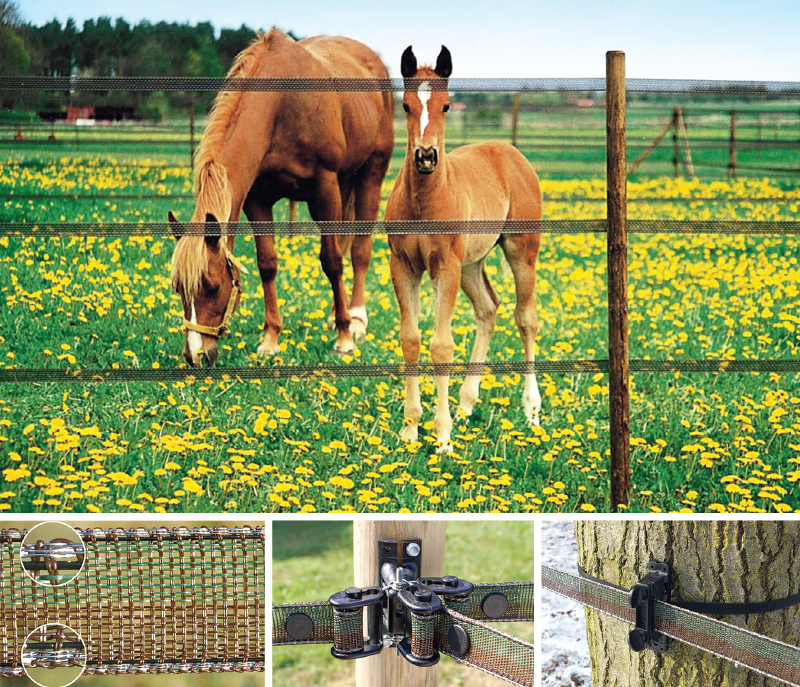
HorseGuard Canada’s electric ribbon consists of 10 stainless steel wires on a 4-centimetre wide ribbon. Photos: HorseGuard Canada
“If it is a zero-pressure perimeter fence, it can be a lightweight panel,” she says. “If it’s for livestock, it needs to be a heavier, stronger panel.”
While horses generally learn their containment restrictions and respect them, it can be different for cows. My neighbour’s Aberdeen Angus calves frequently broke through the wire fenceline by simply barging their way through with a butt-head approach. New fence posts and tighter page wire were needed to contain them.
When discussing fencing options for horses, barbed wire must be addressed. In many parts of the country, barbed wire is still used for horse containment but, of all fencing, it is the least suitable for horses since it places them at high risk of injury. Barbed wire can cause deep and jagged wounds and a panicking horse with a foot caught in barbed wire can do fatal damage to itself. Barbed wire is still found on large fenced areas where it has likely been in place for decades and never changed.
To lessen the impact of barbed wire, replace the top wire with wooden planks nailed in place on the inside of the fence line. In addition, electric wire can be installed. Raise the bottom strands sufficiently up from the ground so that a pawing hoof doesn’t get caught. As long as the fence is highly visible, allowing weeds, vines, and low bushes to grow up through the wire will deter horses from grazing around the fence.
Environmental Challenges
Whatever the fencing material, it is subject in varying degrees to a barrage of environmental impacts including rain, hail, frost, snow, ice, heat, cold, wind, as well as horses and other livestock leaning and rubbing on it, and wildlife trying to move through it.
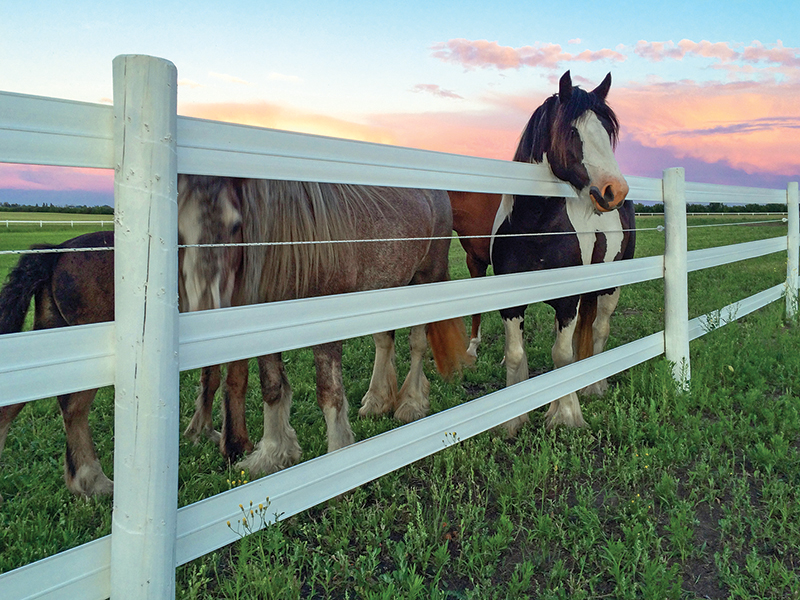
Safe, strong fencing is a sound investment in your horse and property. Photo: System Equine
“One environmental impact is frost heaving of the posts,” says Job. “Make sure to push them back down in the spring. Check your fences a couple of times a year. Make sure nails are nailed back in and not sticking out and that brackets are secure, the fence is tight, and wire fence staples are put back in.”
When winter temperatures drop, fences can become brittle, which can lead to cracking and breaking. Some fences might expand or warp in hot temperatures and that, too, can pull boards off posts or their fasteners. Check with your installer that fencing materials have been engineered to withstand today’s temperature ranges.
Sunshine can also degrade wood fencing through fading and drying out, causing wood to become more brittle. Fences that can withstand strong sunlight and UV rays are vinyl fences containing titanium dioxide, which prevents ultraviolet rays degrading the material. Snow, ice, sleet, and rain and other forms of moisture can lead to mold, mildew, and rot. Weight from snow and ice can be an issue when it piles up on posts or ice storms encase fencing in thick ice sheets. Hail, too, can target wood board fences and wind storms will put pressure on all structures.
Given climate change, considerations about weather events in your region should be taken into account. Most materials are designed to withstand the normal range of elements, but we are seeing extremes of all types of weather more frequently and those events place stresses on all structures leading to more frequent maintenance jobs or complete replacement needs. Wood is particularly vulnerable while vinyl, aluminum, and steel piping are more capable of withstanding extreme weather including corrosion, rust, mold, sagging, breaking, and discolouring.
Safe, reliable fencing requires professional installation, but will be a valuable investment in protecting your horses and safeguarding your property.
Related: 50 Ideas for Improving Your Horse Property
Related: Horse Pasture Renovation
Main article photo: Shutterstock/Anne Kitzman




